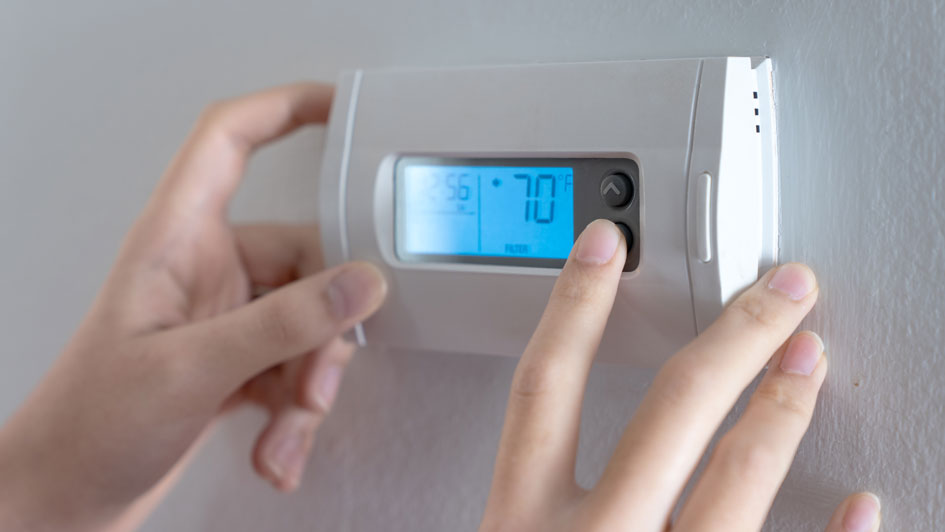
Everyone’s always looking to save money on their utility bills, but it turns out there’s a way to do it when you aren’t even home.
It starts with your thermostat. By making the most out of your thermostat, you can help the thermostat plan for your preferred temperatures. That means you can have different temperature settings for when you’re home, away or even when you’re sleeping.
If you're willing to make these adjustments, you have more time to enjoy pleasant temperatures while also keeping more of your money. Here are some ways your thermostat doesn't have to use up all your summer spending money:
While at Home
When you’re home, you want a nice range of pleasant temperatures. For the most part, you probably have your thermostat lower in the summer while you are in the house to make the most of the cool air.
But the most energy-efficient temperatures for when you're in your home during the summer is usually between 78 and 80 degrees Fahrenheit. With this adjustment, you'll keep cool while still lowering your monthly energy bill.
While Away
When it comes to setting the temperature for when you are out of the house in summer, it's extremely common to move the thermostat higher than you would if you were in the house.
If your home is located somewhere a little cooler, you can set the thermostat to higher temperatures like 88 degrees while no one is home before lowering it back to the sweet spot of 78-80 degrees once you're home again. This way, your air conditioning unit won’t be working overtime to keep an empty house cool.
While Asleep
For a full night's rest during summer weather, you want a temperature that's nice and cool. A great place to start is between 68-72 degrees Fahrenheit. There's less risk of getting too hot or too cold when you are trying to get some rest.
Other Ways to Use Less Energy:
- Put in a smart thermostat: Trying a smart thermostat in the summer can lower energy costs as it forms temperature schedules according to your lifestyle and idea of what comfortable is. A smart thermostat manages the temperature if you are home or sleeping, while allowing it to get warmer when no one is home. With reliable brands like the Lennox iComfort, you can adjust the temperature remotely through your smartphone, tablet or laptop. Planning smart thermostat installation in your Cambridge home is an effortless way to set the correct temperature even when you aren’t home.
- Update your existing HVAC system: Upgrading your HVAC system saves money right from the start. If a system boasts high energy efficiency, lower utility bills won't be far behind since it requires less energy to heat and cool your home. Air conditioning installation in Cambridge is a great way to beat the heat in the summer.
- Schedule annual AC maintenance: Investing in or ignoring regular air conditioning maintenance in Cambridge can have a big impact on your monthly energy use. If you stay on top of cleaning key components like the coils, checking for damage and clearing ventilation of dust and debris, this can help your HVAC system perform better during day-to-day use.. Increasing efficiency also limits strain on important or delicate components and lowers operational costs, resulting in lower energy usage and subsequently, smaller bills.
- Clean or replace the air filter on a regular basis: Regularly changing the air filters in your HVAC system saves money by keeping airflow as smooth and consistent as possible. When filters are clogged with dirt and debris, your air conditioner will have to work harder, and the added strain may impact the system’s life span and cause breakdowns.
- Verify your attic has enough insulation: Insulation is a crucial component for any energy-efficient home, securing the hot air outside and the cool air inside over the summer. The North American Insulation Manufacturers Association (NAIMA) offers an official recommendation stating homeowners in souther states should have at least 13-14 inches of insulation, while states further north need 16-18 inches.
- Inspect your air ducts: A leak in the air ducts could increase your energy bills much more than 20 percent, plus it can potentially allow harmful emissions from your water heater, clothes dryer and other appliances to get into the atmosphere of your home. Watching for signs of leaks and sealing them can address both concerns.
- Seal all other leaky spots in your home: Finding and sealing any remaining leaks in your home with caulk, foam sealant or weather-stripping keeps temperatures a little cooler on hot summer days. Don't forget to check for any gaps around windows, doors and even outdoor fixtures. Taking the time to seal up any leaks now can help you save a lot over time.
